For most of us, junk mail is a nuisance. But for textile artist Jaynie Gillman Crimmins, junk mail and catalogues are the materials she uses to make provocative and compelling works.
Jaynie exposes the purposeful and sometimes dastardly persuasive goals of junk mail by refashioning and reshaping the papers into sewn metaphorical ‘protests.’ Her unique process of shredding, rolling, and otherwise manipulating flyers, catalogues and safety envelopes is truly remarkable.
This article shares an insider’s look into both Jaynie’s thinking and process. You’ll be amazed by her creations and have to remind yourself what you’re seeing comes from a mailbox.
And you’ll be surprised to learn about the national events that sparked this creative journey in the first place.
Jaynie, a Brooklyn-based artist, creates alternative narratives from quotidian materials. Her work has been exhibited at ART on PAPER; SPRING/BREAK Art Show; Governor’s Island Art Fair and the National Museum of Romanian Literature. Jaynie also has a long history of community work, and she currently volunteers with the Learning Through Art Program.
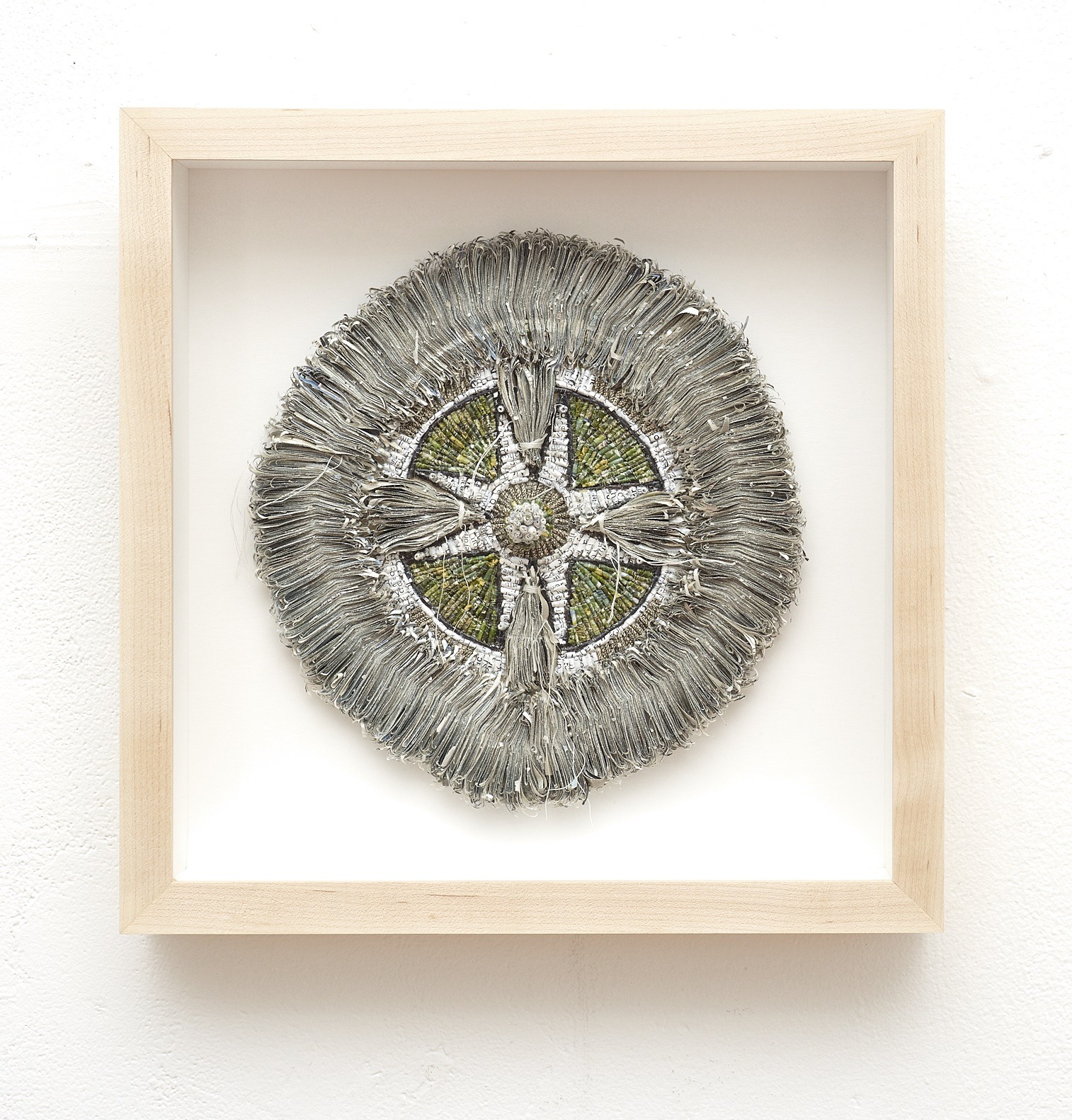
Art as protest
TextileArtist.org: What initially attracted you to textiles as a medium? How was your imagination captured?
Jaynie Crimmins: Although I do not now consider myself a textile artist, I use sewing as one of the techniques to fabricate my work. Visits to my grandparents introduced me to sewing, knitting and crocheting. And my maternal grandmother was a wizard at repurposing by cutting all of our old clothing into strips to crochet huge, functional rag rugs.
During my undergraduate education, I took several weaving courses which lead me to an interest in coiled basketry and frame loom weaving.
I was also a self-taught embroiderer and enjoyed using embroidery as ornamentation on clothing and decoratively in artwork as well.
Overall, I found fibers to be a very expressive medium that allowed me the freedom to use traditional techniques to create non-traditional work.
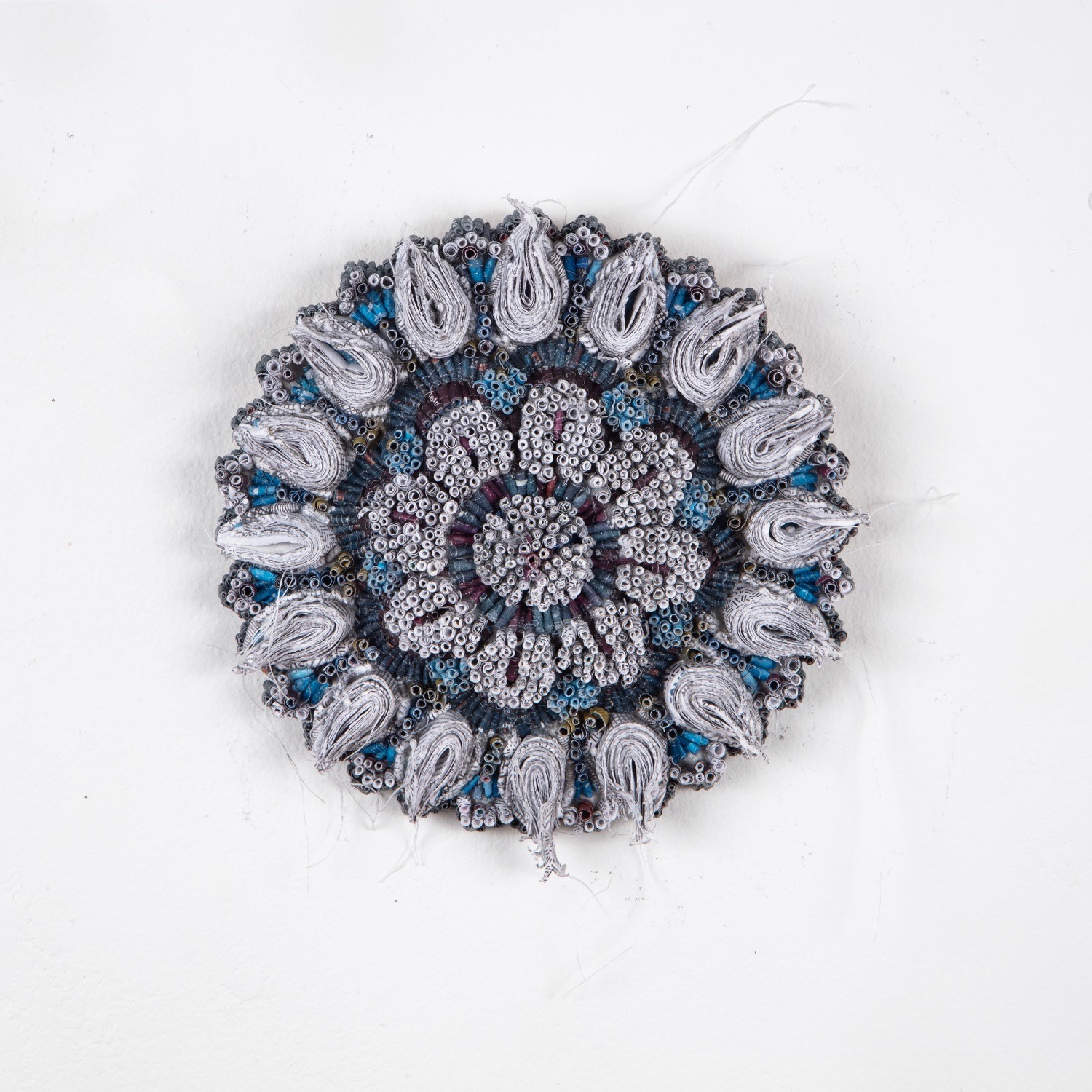
What or who were your early influences and how has your life/upbringing influenced your work?
My maternal grandmother predominantly influenced my work. Nothing seemed to make it into the trash in the Brooklyn apartment of my Eastern European grandparents. Discarded clothing became crocheted rugs. Old curtains became aprons. Leftovers became the ingredients for new meals.
Nothing was wasted, and everything possible was reused. Castoff items became novel and compelling in their metamorphosis.
So that familial sensibility informs my practice with its power of transformation, frugality, ingenuity and handmade quality.
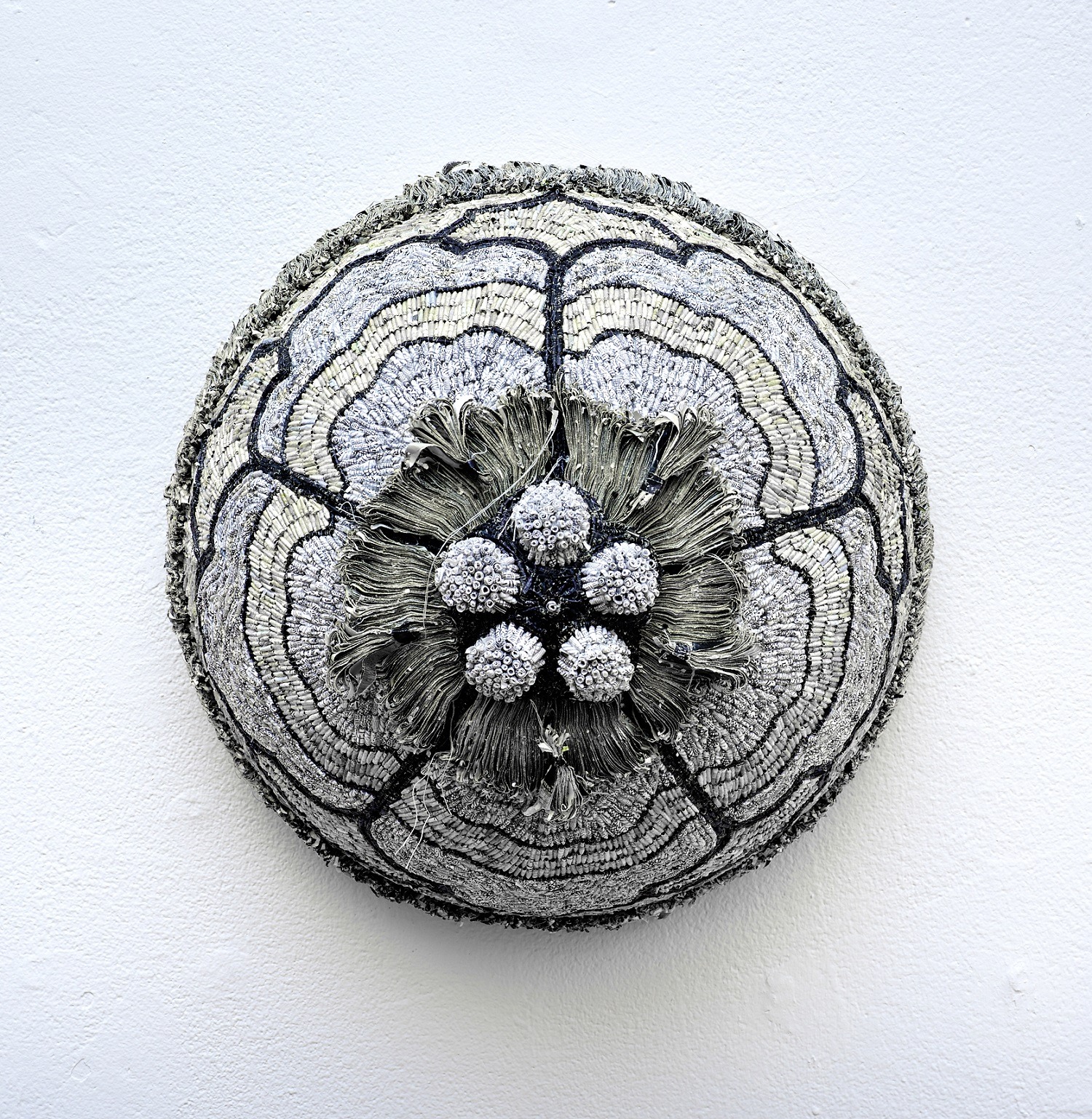
What was your route to becoming an artist?
My creative practice was put aside for about 15 years while teaching art full-time, working towards a Master’s degree in Art Education and raising a family. In 2006, I began taking graduate fine art courses and workshops through which I slowly explored materials and methods of creating.
Although I have always kept visual journals, I only began defining myself as a full-time artist in 2009. That is when I began using shredded papers, searching for the right balance of personal expression, context for the work and construction techniques.
Our nation’s circumstances during this period were dire. During the recession, people were losing their homes, jobs and were unable to pay their bills. Destroying my financial papers was my way to deal with the anger, sadness and disbelief that the warning signs of this disaster had been ignored for at least two years.
After experimenting with various ways of working with the financial papers, I decided upon shredding and then sewing, folding and rolling the shreds. These techniques seemed old fashioned, and I felt like I was ‘mending’ what was destroyed. While shredding fragmented the content of the papers, reconstructing them also created a new frame of reference. And that inspired my first project called Home Economics and the second series entitled Borrowing from the Future.
When I first began working with shredded paper, I became fascinated by encaustic paints and began incorporating beeswax as both a unifying color in my work and as an adhesive. For me, the beeswax became like amber. It trapped the history of the subprime mortgage crisis, the deregulation of financial institutions and its effects on ordinary American citizens.
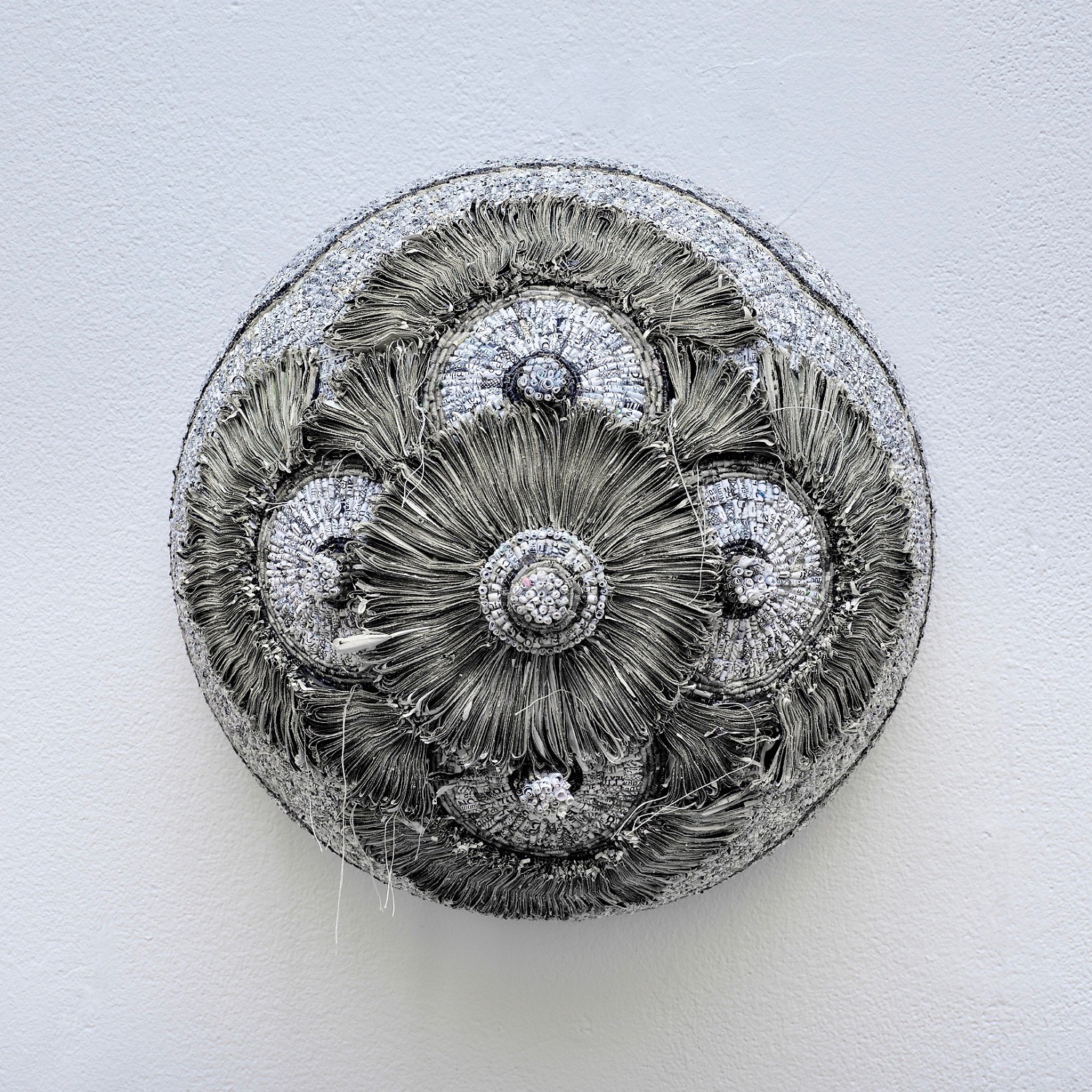
Shredding with a purpose
Tell us about your process from conception to creation
Something internally or externally stimulates my curiosity which then leads to a series of pieces that investigates an idea, feeling, memory. Further, my projects [series of pieces] are informed by books, current events or a personal concern and take shape through my examination of their content.
My materials are solicitations, safety envelopes and catalogs that are difficult to recycle because their inks have a high concentration of metallic inks.
In addition to shredding the previously mentioned materials, I use thread, various armatures and glue. The shredded mailings are interwoven into the context and content of the work.
Deconstructing these materials reshapes their formulaic messages into narratives of personal interest.
My palette is derived from the colors of catalogs, solicitations and patterns of safety envelopes. There is no specific form that defines my work, although there are reoccurring motifs and shapes, particularly botanical, architectural and marine-inspired ideas.
During the process of creation, the direction of the work can change by varying the technique used to build with the shreds. This can be a challenge, yet it keeps the work interesting and fresh for me.
About seven years ago, I stopped using beeswax as an adhesive. A critical step of my practice most recently has been sorting paper shreds by color, in many cases blending solicitations and safety envelopes with various catalogs, affording me control over the range of color.
My new project In Search of Beauty makes a departure from this task, with each piece using a single catalog in combination with other shreds, restraining the range of colors.
My process is very laborious and meditative, yet I am also making decisions all along the way. Sometimes those decisions change the direction of the piece. My final artworks continually surprise me.
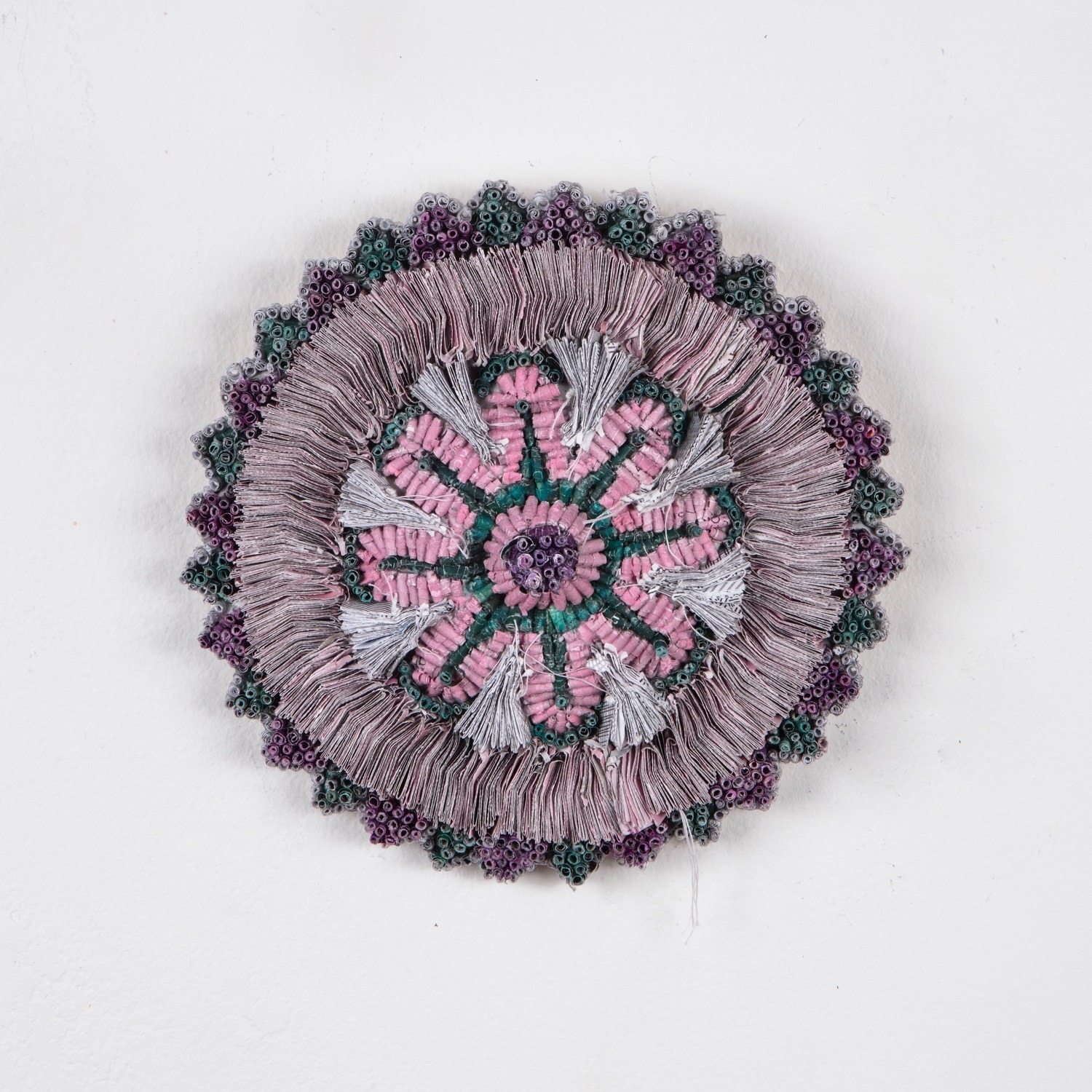
Tell us a bit about your chosen techniques and how you use them
My medium is shredded paper. I manipulate this paper in various ways: rolling, folding and sewing.
Rolling is done with my non-dominant [right] hand, and then individual rolls are placed on an armature one-by-one with a tweezer.
Each shred is folded or left untouched and then sewn.
The sewing is functional but also adds an unexpected element in the finished work. Leaving ends of threads hanging loose in the completed works creates a ‘breath.’ And their fluidity becomes a contrast to the tightness of the rest of the surface and texture.
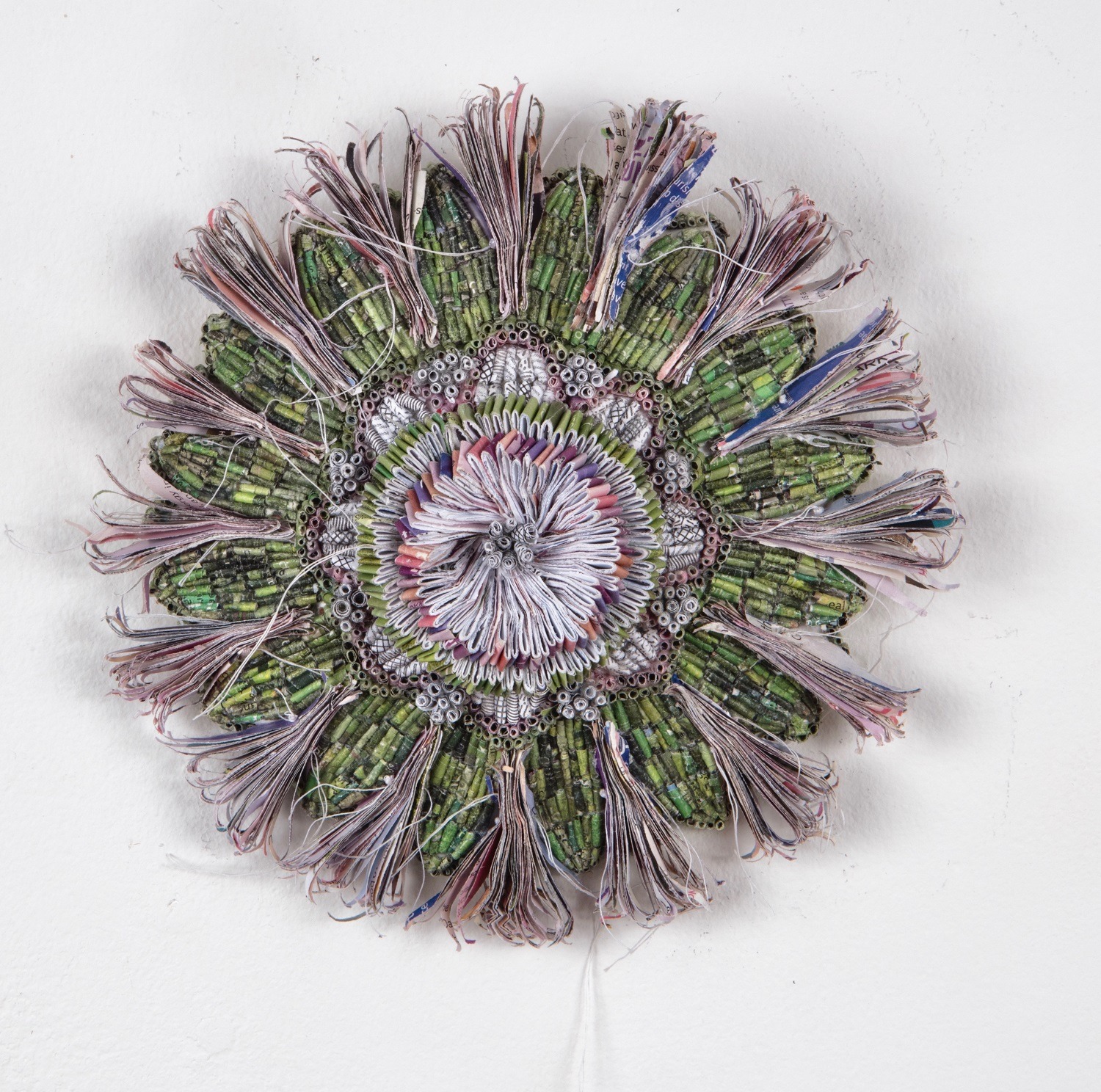
What currently inspires you?
As noted earlier, I am currently working on a project called In Search of Beauty. In these dark and difficult times for our nation and the world, I feel compelled to make beautiful objects.
By rearranging mass-marketing mail, this project seeks to reconfigure promotional aesthetics into work advancing my personal conception of beauty. Inspiration comes from architectural elements and nature.
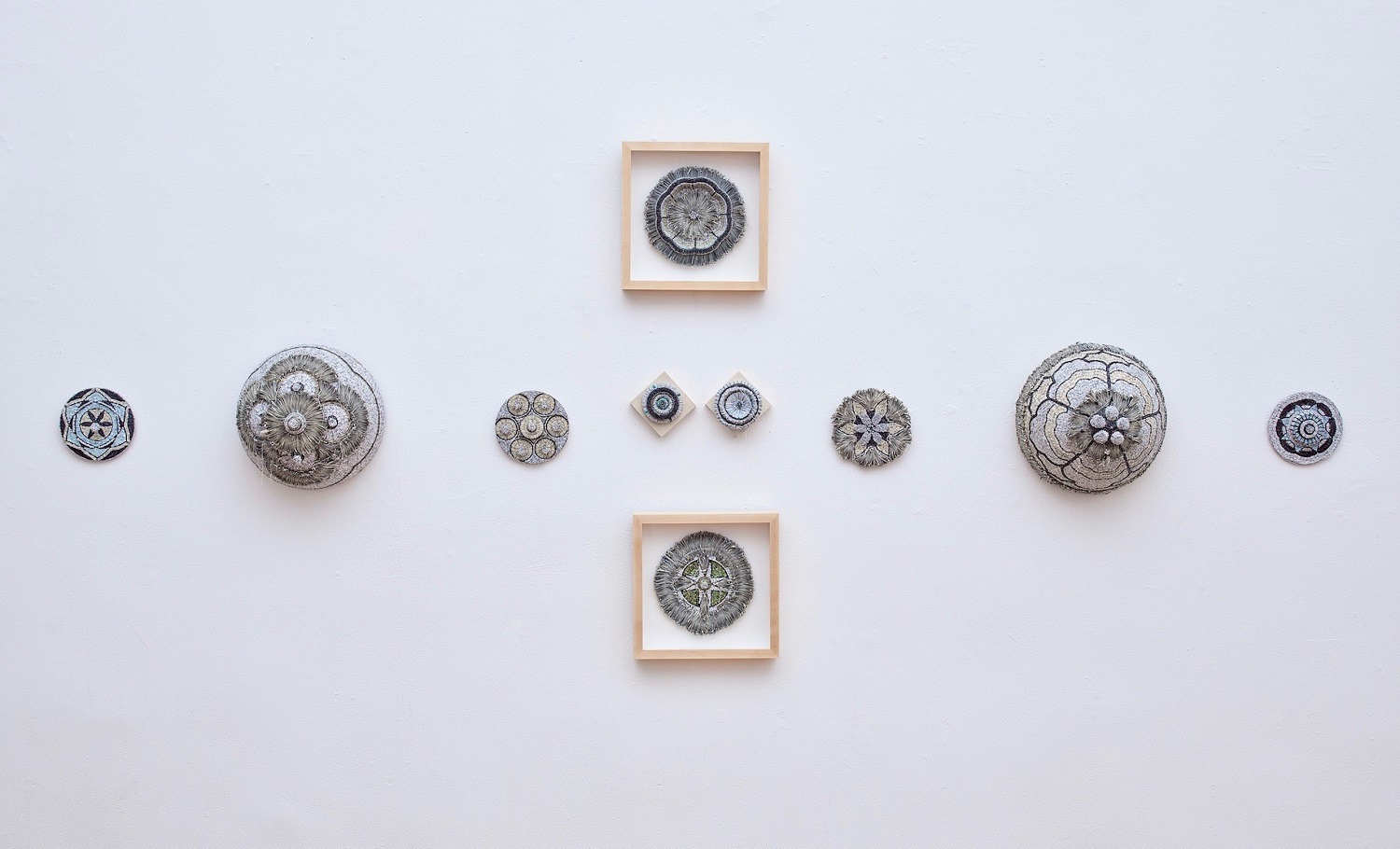
The importance of symmetry and economy
Tell us about a piece of your work that holds particularly fond memories and why?
A Field Guide to Getting Lost (a series of pieces from 2018) explores issues of memory, creativity and the endeavor to be fully present using my explorations of geography. This project liberated me from my use of and reliance upon navigation apps while moving through the urban landscape and its parks.
The desire to surrender to my surroundings and meander and notice my environment without connection to a smartphone continues to inspire me as I walk the streets of NYC and wander through its parks.
Linking my internal world to the external world allows for new narratives and the assimilation of details. The development of these practices has reawakened my ability to dream, wonder and observe in a visceral way.
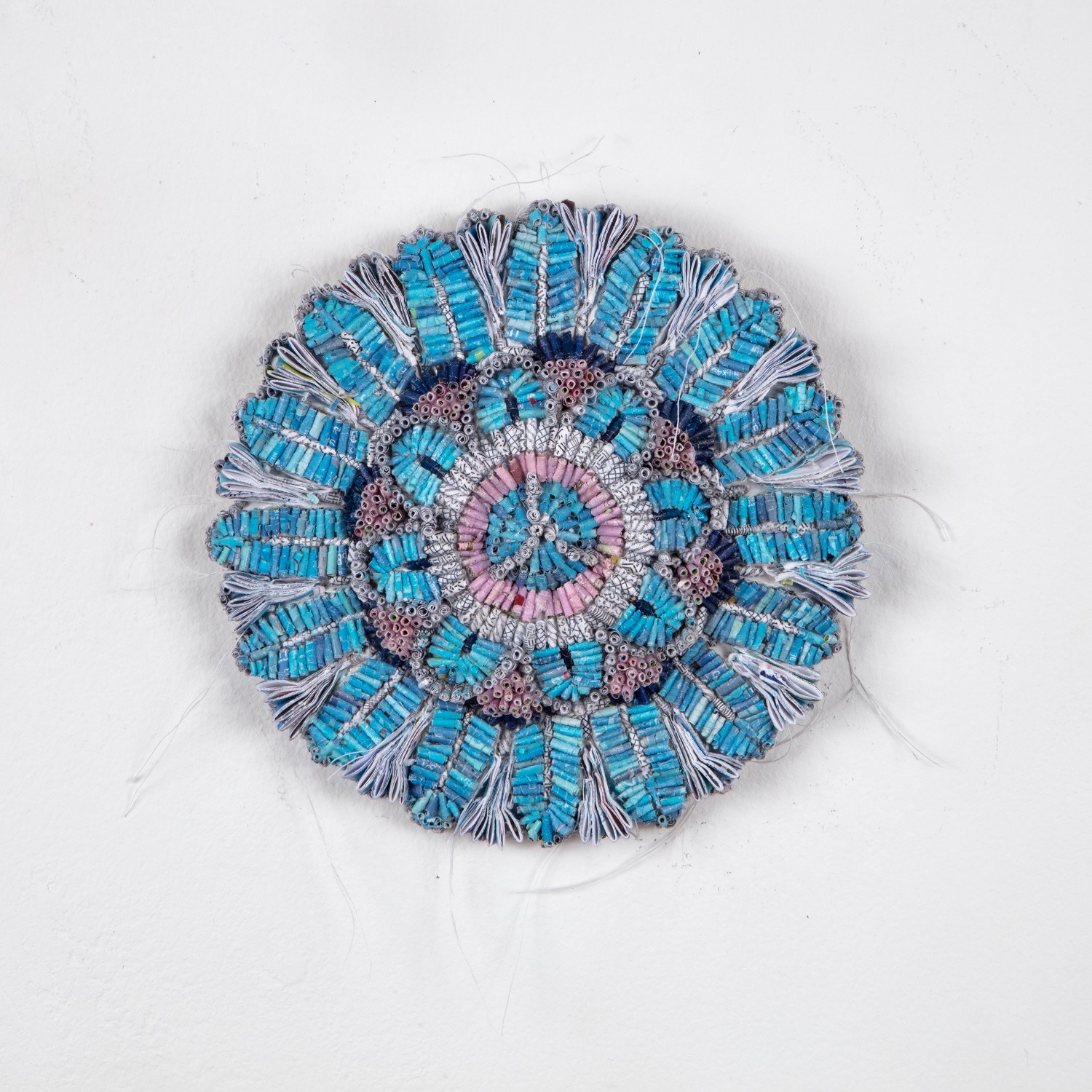
How has your work developed since you began and how do you see it evolving in the future?
I have been working with shredded personal papers and mail since 2009. That is 10 years as of this writing.
When I began with this medium, my forms were based on marine life and ‘felt’ organic. As the work progressed, I began experimenting with other forms.
In 2015, I read Frank Wilczek’s book A Beautiful Question: Finding Nature’s Deep Design . Wilczek defines beauty in nature through two distinctive features: Symmetry (a love of harmony, balance and proportion) and Economy (satisfaction in producing an abundance of effects from very limited means).
These principles acknowledge my methods of fabrication and influence my approach to form. Symmetry and Economy continue to sustain my practice, inspiring works that seek out patterns to create finite objects.
It is difficult to envision the evolution of my artwork. So, if I look back in order to look forward, I would say I have continued and will continue to work with the material of shredded mail until I feel like I have explored EVERY permutation possible.
The transformation of my materials progresses through a series of small changes to the surface of the work. And while the changes that occur in my work seem revolutionary to me, it is possible they are not even noticeable to others.
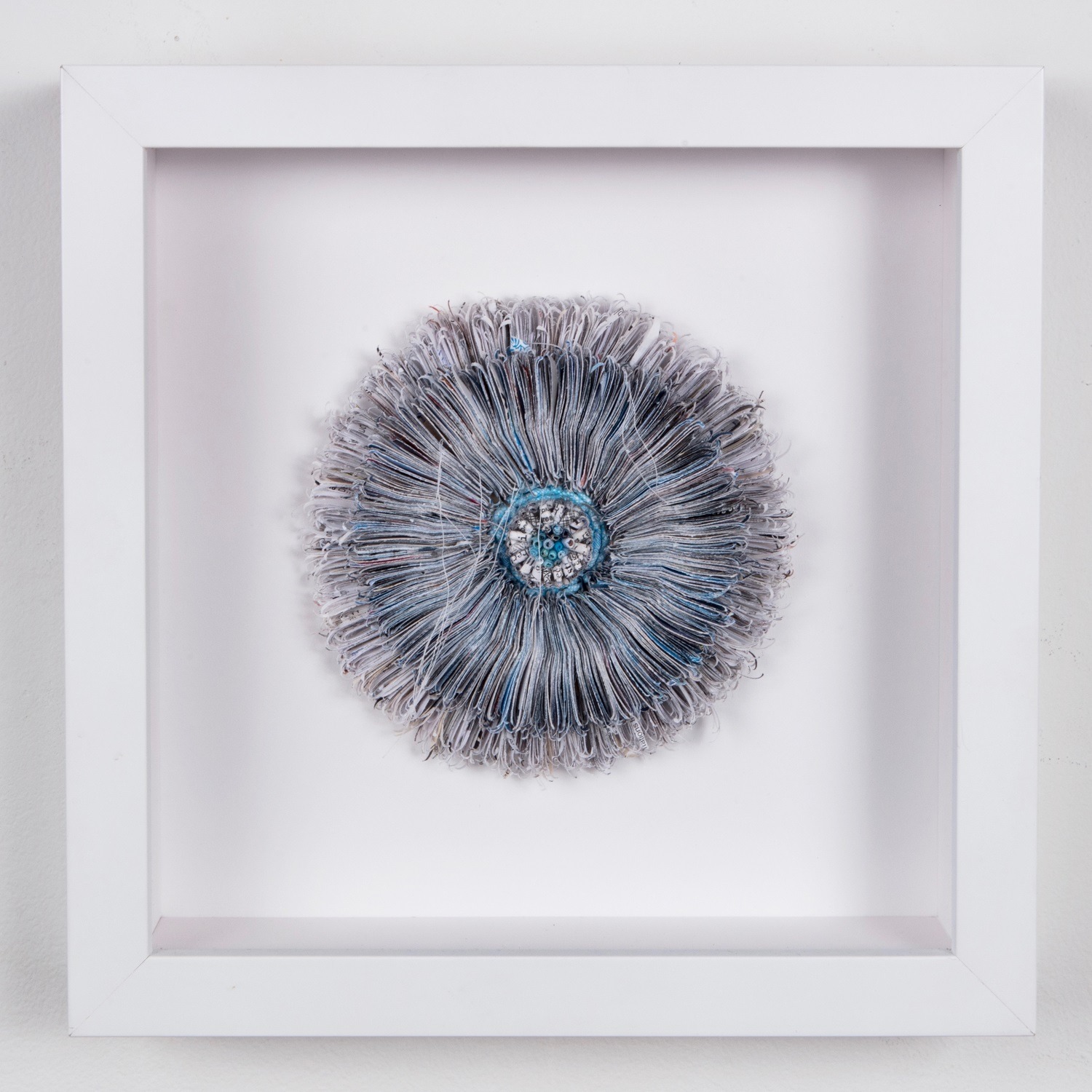
What advice would you give to an aspiring textile artist?
My advice is twofold. Most importantly, make your work. And then try to network with other artists in both real-life and on social media.
If you admire someone’s work or feel it relates to what you are doing, visit an exhibit of their work, ask to visit their studio or contact them through social media or email. It’s not about asking for a favor. You instead want to listen to their story and learn about their evolution as an artist.
Joining artists’ or other professional organizations can also help build a network of like-minded people who are generally willing to share information about techniques, exhibit opportunities and workshops/conferences.
For more information visit www.jayniecrimmins.com
Junk mail is truly a novel material to recycle into textile art. What unique materials do you recycle in your own work? Let us know below.
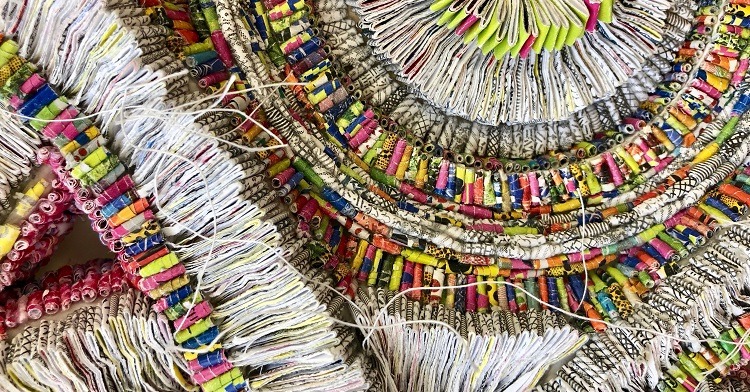

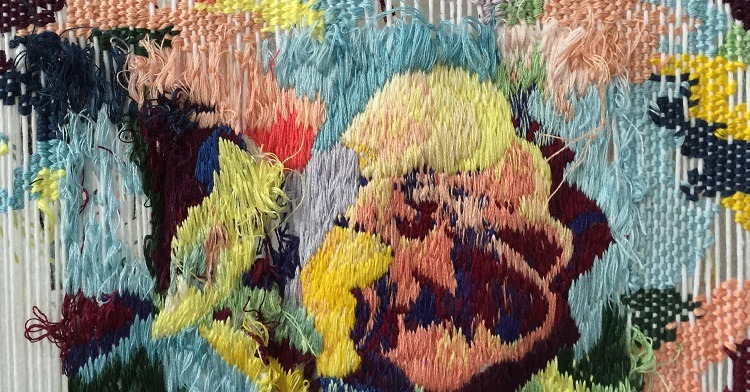
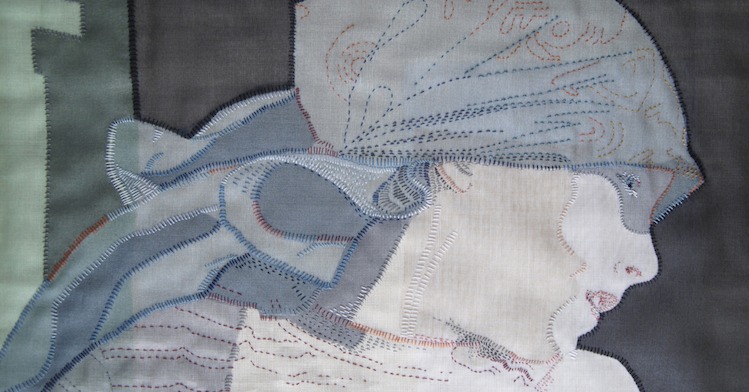
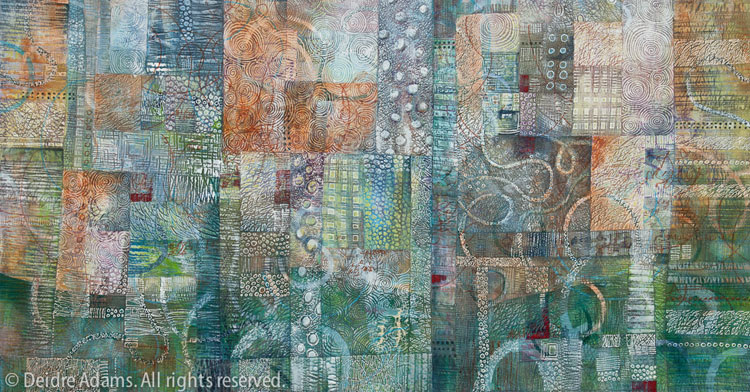
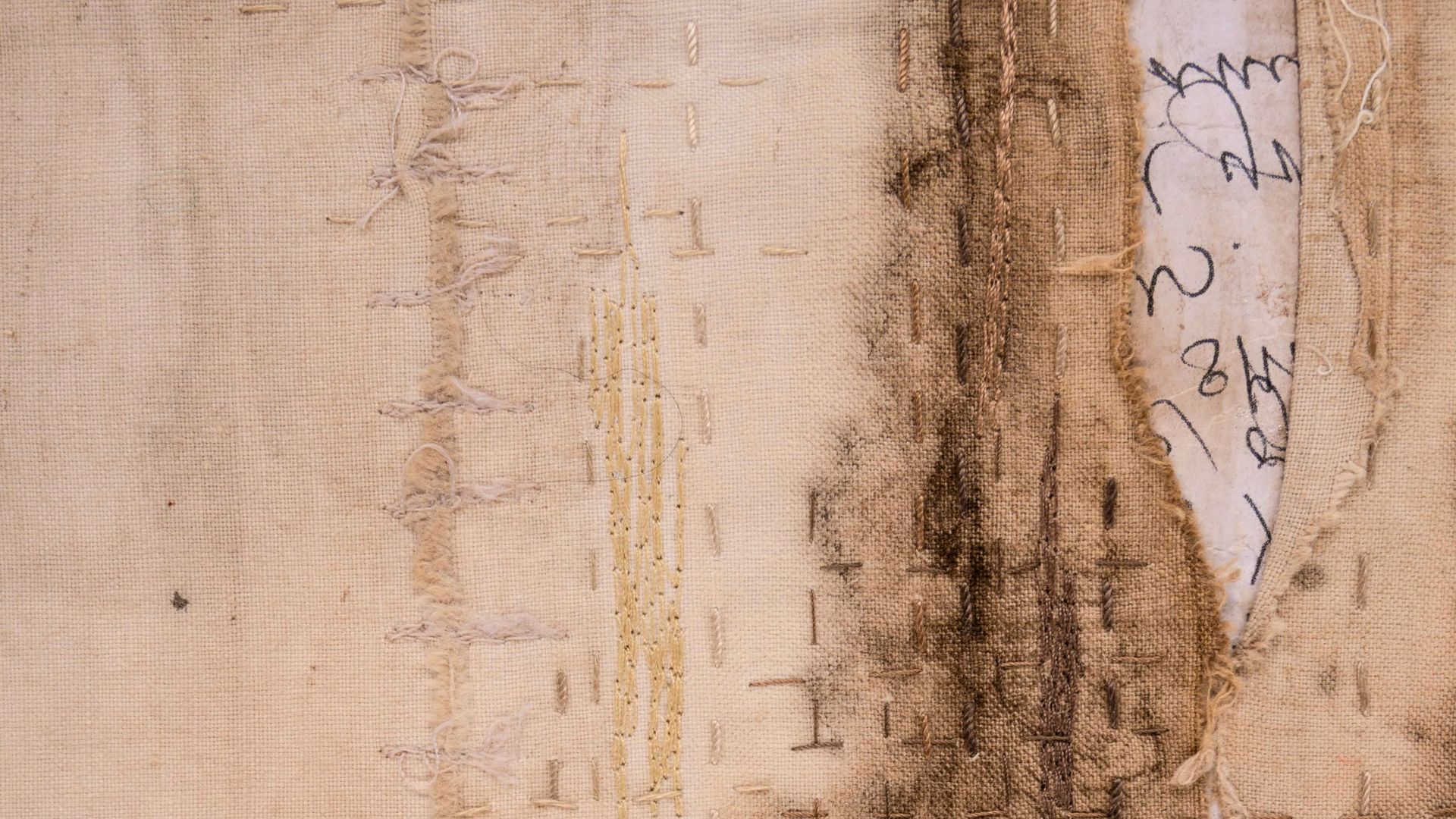
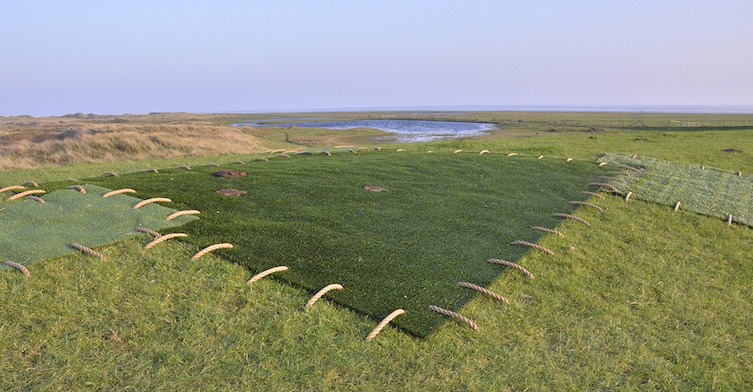
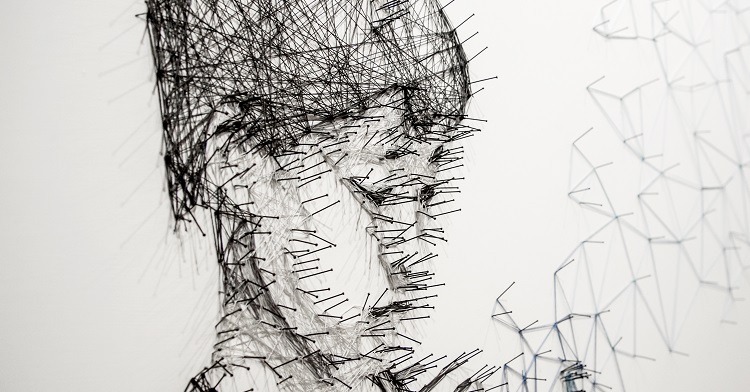
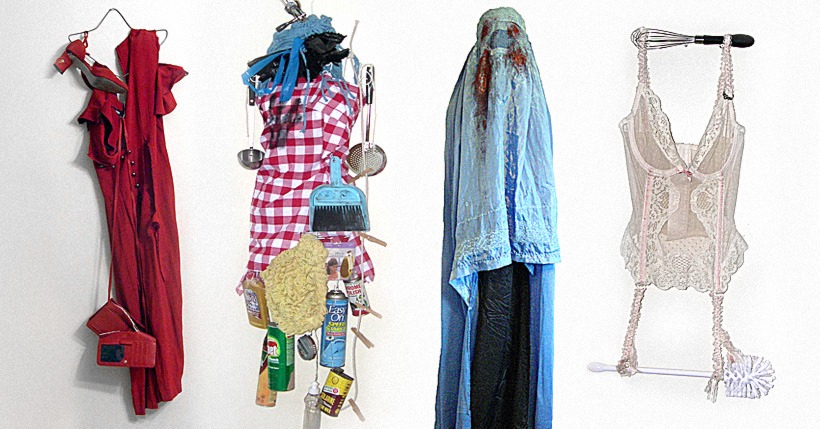
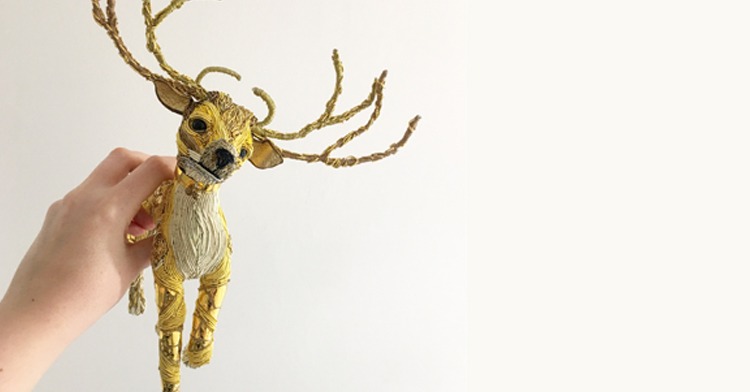
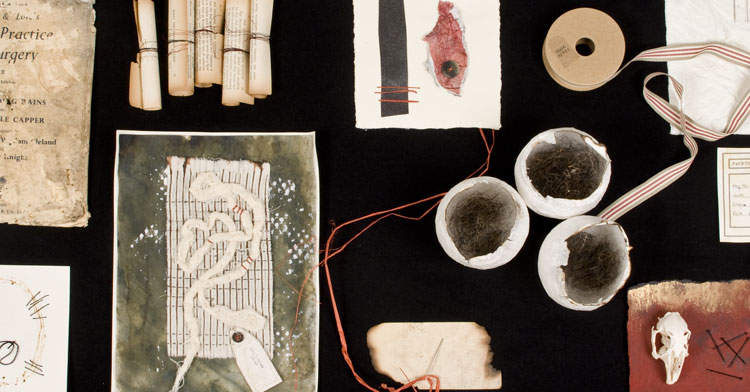
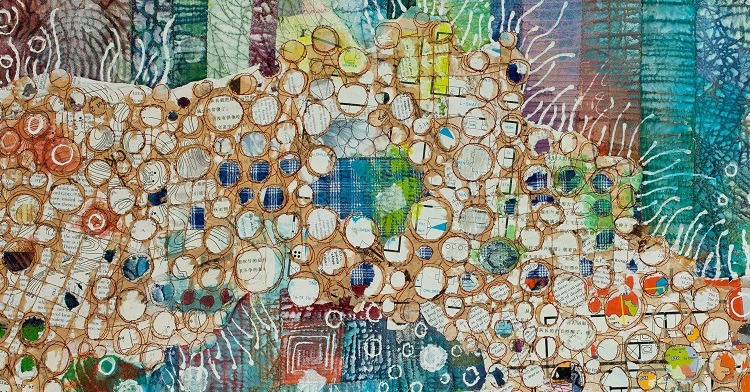
6 comments
Margot
Yum
Tehseen
What a superb work really its a brilliant source of inspiration well done.. I m also a textile artist, during my studies i did plastic recycling through weaving, and created scenic beautiful pieces, explored every possible weave structures created warp and weft water resistant to create products for beach. Email me for more details. Feel free to ask more about it.
Arleen Joseph
Outstanding !!!
Your work is amazing , even more so now that I read your process of materials!!
Well done Jaynie …Congratulations !!!
sabrina
So originals and interesting works!
Sue Saunders
Love this artwork! So beautifully done. I have made Mandalas ( 1 metre , and 1.50 metres) from recycled cardboard, and from used hunting cartridges with hanging feathers, and children’s small plastic toys, plastic milk carton tops and bits of found plastic. And a piece from a found child’s rusty cot springs I hung strips of dip dyed old cotton sheeting. I always, use recycled materials which I’ve stored up or found.
Angela
What an absolutely inspirational article! And such superb and beautiful artwork. Thank you. AT